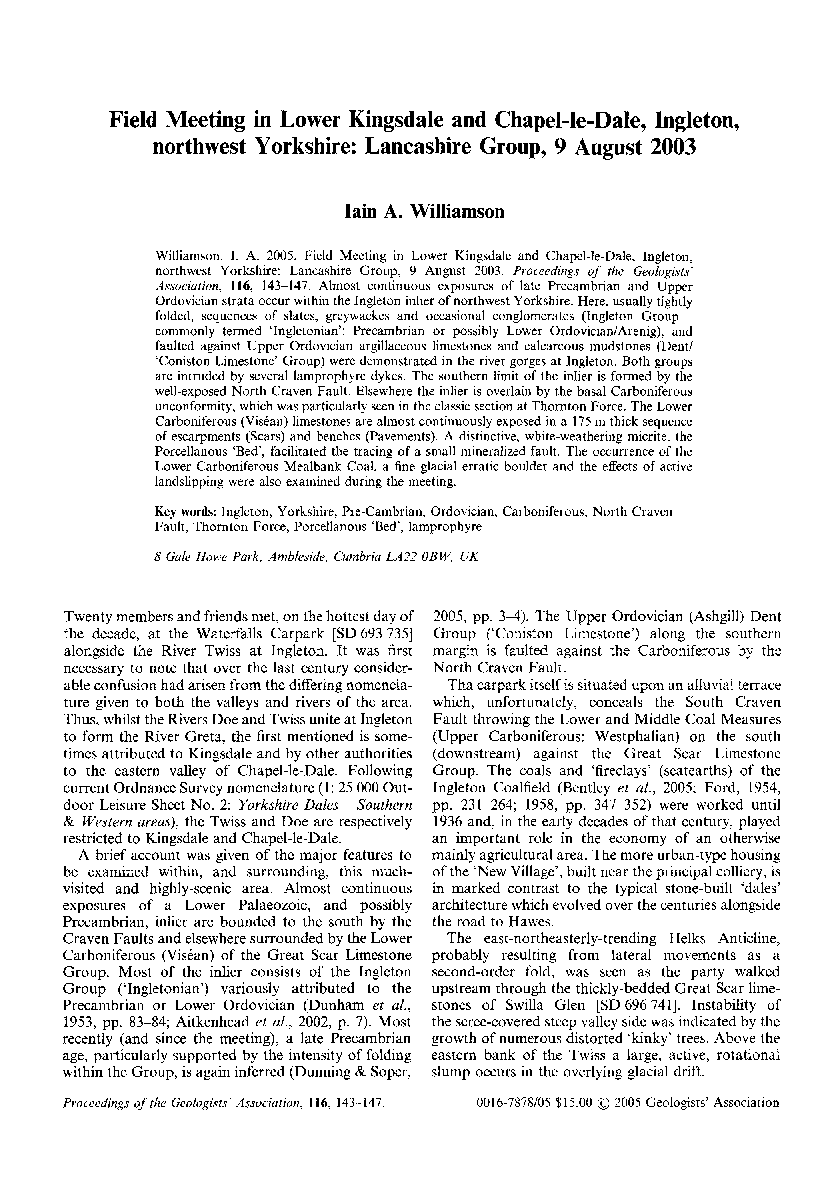| Article ID | Journal | Published Year | Pages | File Type |
|---|---|---|---|---|
| 10120791 | Proceedings of the Geologists' Association | 2005 | 5 Pages |
Abstract
Almost continuous exposures of late Precambrian and Upper Ordovician strata occur within the Ingleton inlier of northwest Yorkshire. Here, usually tightly folded, sequences of slates, greywackes and occasional conglomerates (Ingleton Group - commonly termed 'Ingletonian': Precambrian or possibly Lower Ordovician/Arenig), and faulted against Upper Ordovician argillaceous limestones and calcareous mudstones (Dent/'Coniston Limestone' Group) were demonstrated in the river gorges at Ingleton. Both groups are intruded by several lamprophyre dykes. The southern limit of the inlier is formed by the well-exposed North Craven Fault. Elsewhere the inlier is overlain by the basal Carboniferous unconformity, which was particularly seen in the classic section at Thornton Force. The Lower Carboniferous (Viséan) limestones are almost continuously exposed in a 175 m thick sequence of escarpments (Scars) and benches (Pavements). A distinctive, white-weathering micrite, the Porcellanous 'Bed', facilitated the tracing of a small mineralized fault. The occurrence of the Lower Carboniferous Mealbank Coal, a fine glacial erratic boulder and the effects of active landslipping were also examined during the meeting.
Related Topics
Physical Sciences and Engineering
Earth and Planetary Sciences
Geology
Authors
Iain A. Williamson,
